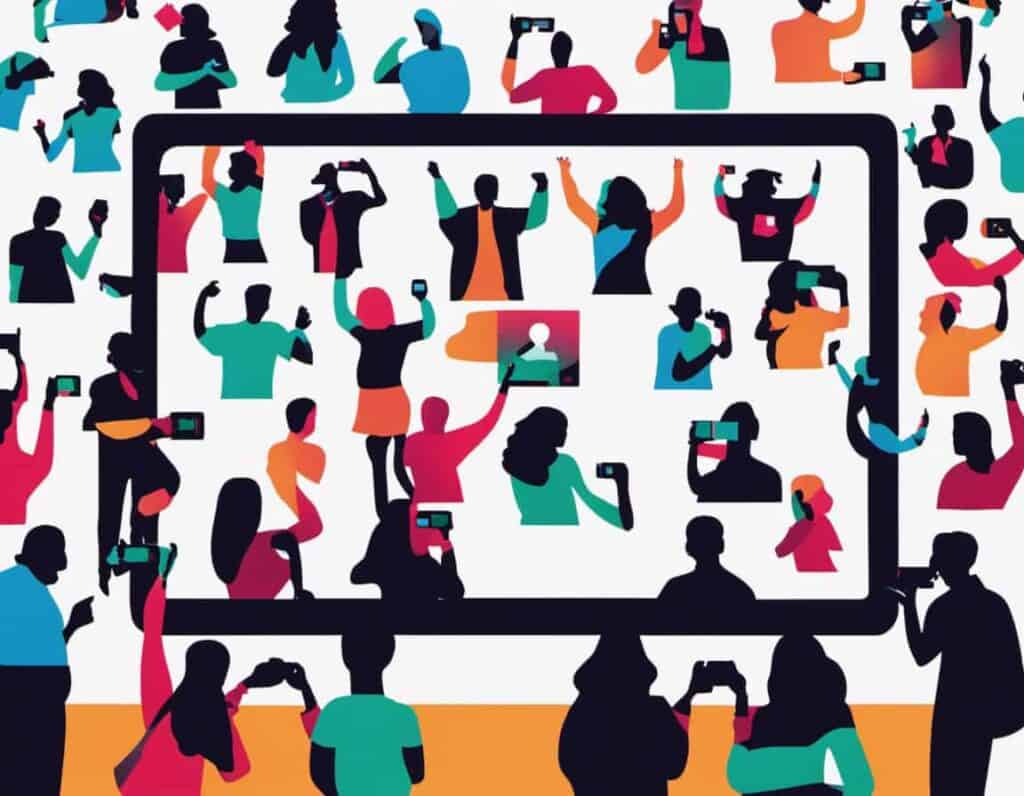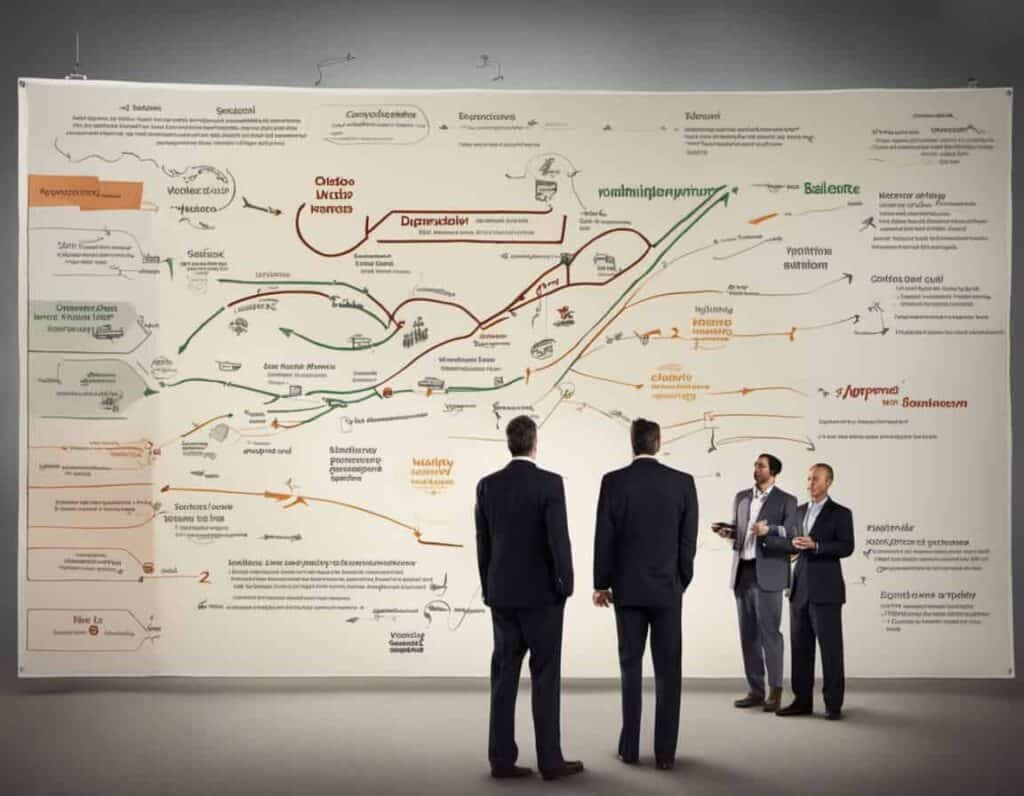In the panorama of philanthropy, a digital renaissance is unfolding before our eyes. As leaders and visionaries in the fundraising sphere, you’ve witnessed the seismic shift from traditional galas to the virtual vortex of online giving.
But have you fully harnessed the power of digital and virtual dexterity in your fundraising endeavors? Are you seeking fresh, inventive avenues to not only meet your goals but exceed them in a digital-first world?
Let’s embark on a journey through the most creative and compelling virtual fundraising event ideas that are reshaping the nonprofit landscape.
1. Virtual Gala Events: A Digital Red Carpet Affair
Imagine a world where the elegance of a black-tie gala meets the digital and virtual frontier. A virtual gala is a contemporary twist on the classic fundraising ball, where attendees celebrate and contribute from afar.
It’s a gala transformed into pixels and sound bytes, dancing through the wires to reach supporters worldwide.
Virtual galas offer an unparalleled edge by eliminating the physical limitations that bound traditional galas. They allow for an expansive audience, often resulting in reduced costs and a broader reach.
Key Aspects to Consider When Hosting a Virtual Gala
- Theme and Ambiance
- Digital Invitations
- Tech Check
- Entertainment Lineup
- Interactive Agenda
- Donation Mechanisms
- Promotion Strategy
- Rehearsals
- Accessibility
- Follow-Up
The digital toolbox for a virtual gala is expansive. From high-definition streaming platforms to interactive chat applications, technology serves as the backbone of your virtual event. Augmented reality can even bring the gala to life, right in the comfort of the attendees’ living rooms.
Virtual galas can dramatically widen the donor pool, breaking free from geographical constraints.
They often lead to cost savings on venue and logistics, allowing more funds to be funnelled towards your cause. The data collected can provide insights for future events, and the digital or online format can generate buzz that transcends the event itself.
Actionable Tips
- Engaging Host: Select a host that is charismatic and comfortable with online platforms.
- Sponsor Highlights: Offer virtual sponsorship packages that include online recognition.
- Social Media Integration: Use social platforms for live updates and engagement during the event.
- Interactive Features: Include features like live chat to keep the virtual crowd buzzing.
- Tech Support: Have a tech team on standby to assist attendees with any issues.
- Digital Souvenirs: Send digital tokens of appreciation to attendees post-event.
- Analytics Review: Post-event, analyze the data to understand attendee behavior and preferences.
A virtual gala’s allure knows no bounds, attracting a global audience that traditional events might miss. Nonprofits focusing on international causes or with a wide supporter base stand to benefit immensely from this digital pivot.
The virtual gala is an innovative testament to the resilience and adaptability of those who champion causes in an ever-changing world.
2. Peer-to-Peer Fundraising: The Community Amplifier
Peer-to-peer fundraising is the digital era’s answer to the traditional sponsored walkathon, where instead of gathering in a park, supporters rally their personal networks online for your cause.
It’s a powerful way to amplify your message, turning each participant into a beacon of advocacy with the reach of their social networks. This approach transforms fundraising from a monologue into a community-driven dialogue.
Peer-to-peer fundraising leverages the vast and interconnected web of virtual platforms, transcending the limits of physical events. It creates a multi-layered campaign where each participant’s story adds depth and reaches beyond what traditional events could ever achieve.
Key Aspects to Consider When Hosting Peer-to-Peer Fundraising
- Empowering Advocates
- Training Resources
- Social Integration
- Branding Consistency
- Support and Recognition
- Progress Tracking
- Community Building
- Creative Challenges
- Transparent Communication
- Flexible Platforms
Tap into the power of dedicated fundraising platforms that integrate seamlessly with social media. Use analytics tools to monitor progress and understand donor behavior. And don’t forget communication tools that enable direct and group messaging among participants and organizers.
Peer-to-peer fundraising not only expands your donor base but also deepens the connection between your cause and each supporter. It turns passive donors into active participants, creating a web of engagement that grows organically.
The stories shared create a tapestry of impact that paints a vivid picture of your mission in action. It’s fundraising that doesn’t just aim for the wallet but for the heart.
Actionable Tips
- Inspiring Kick-off: Launch your campaign with a powerful, inspiring event that explains the ‘why’ behind your cause.
- Fundraising Toolkit: Offer a toolkit complete with email templates, social event graphics, and fundraising tips.
- Personal Coaching: Provide personal coaching or webinars for those new to fundraising to guide them through the process.
- Real-time Support: Have a dedicated team to offer real-time support and answer any questions from fundraisers.
- Recognition Program: Create a recognition program celebrating milestones and top fundraisers.
- Feedback Loop: Establish a feedback loop where fundraisers can share their experiences and learn from one another.
- Closing Ceremony: Host a virtual closing ceremony to thank participants, share successes, and celebrate achievements.
Peer-to-peer fundraising resonates with a digital-savvy audience who values personal connection and community impact. It’s especially beneficial for virtual fundraisers that aim to harness the storytelling power of a diverse supporter base.
This is where every individual’s passion becomes the collective power that fuels your mission forward.
3. Crowdfunding Campaigns: Uniting a Community for a Cause
Crowdfunding is the virtual successor to the traditional telethon, a way to rally the masses in support of a cause through the power of the internet. It’s a platform where stories unfold, communities engage, and every donation, big or small, adds a note to the melody of your mission’s success.
Unlike the telethon’s one-way broadcast, crowdfunding is an interactive concert of giving and receiving.
Crowdfunding’s true power lies in its ability to captivate and connect with a global audience, turning empathy into action through a click. Its digital nature means that it can rapidly adapt and respond to the real-time enthusiasm of its audience.
Key Aspects to Consider When Hosting a Crowdfunding Campaign
- Compelling Story
- Visual Appeal
- Goal Clarity
- Reward Structure
- Social Proof
- Regular Updates
- Community Engagement
- Transparency
- Urgency and Timeliness
- Multichannel Promotion
The virtual toolset for crowdfunding includes versatile platforms like Kickstarter and GoFundMe, which integrate sharing features and analytics. Use social media management tools to orchestrate your promotional efforts and keep the conversation alive.
Crowdfunding campaigns can transform your fundraising from a linear path to a multi-dimensional web of support. They democratize giving, allowing anyone to contribute and become part of your cause’s journey.
The shared stories and updates create an ongoing narrative that not only raises funds but also builds a lasting community.
Actionable Tips
- Video Launch: Kick off with a heart-rending video that encapsulates your mission and the change donors can help achieve.
- Donor Shoutouts: Personalize the experience by giving shoutouts to new donors on your virtual platforms or social channels.
- Milestone Celebrations: Celebrate reaching funding milestones with virtual events or live streams.
- Matching Gifts: Encourage larger donations by securing matching gift commitments from major supporters.
- Influencer Engagement: Collaborate with influencers who can bring your campaign to a wider audience.
- User-Generated Content: Encourage supporters to create and share their own content about why they support your campaign.
- Post-Campaign Follow-Up: After the campaign, follow up with donors about the impact of their contributions and upcoming initiatives.
Crowdfunding campaigns resonate with a broad, tech-savvy audience eager to make a difference, especially effective for initiatives with relatable stories that can be easily shared online.
It turns every supporter’s contribution into a vibrant thread in the tapestry of your mission, weaving a story of collective triumph.
4. Online Auctions: The Thrill of the Bid
Online auctions are the digital and virtual evolution of the classic charity auction house, transforming the gavel’s echo into clicks that cross continents. They create a space where the excitement of competitive bidding meets the heartfelt drive to support noble causes.
Unlike their traditional counterparts, online auctions offer the thrill of the bid to anyone with internet access, anytime, anywhere. They extend the reach, increase participation, and often result in higher bids due to the convenience and global access.
Key Aspects to Consider When Hosting an Online Auction
- Desirable Items
- Dynamic Promotion
- Engaging Descriptions
- User-Friendly Interface
- Security Measures
- Social Engagement
- Countdown Timers
- Live Streaming Options
- Feedback Loop
- Follow-Up Storytelling
From auction management software that streamlines the bidding process to social media platforms that buzz with previews and updates, the right tech can make your auction a resounding success. Live streaming services add an extra layer of excitement, bringing the energy of a live event to the virtual realm.
Online auctions can significantly boost fundraising by engaging a wider audience and creating a sense of urgency that drives up bids. They also provide a platform for storytelling, connecting donors with the tangible impact of their contributions.
Actionable Tips
- Vivid Photography: Use high-quality images to showcase the items up for bid, making each one look irresistible.
- Strategic Scheduling: Time your auction for when your target audience is most active online to maximize participation.
- Early Teasers: Release teasers of high-profile items to build anticipation well before the auction begins.
- Influencer Involvement: Partner with influencers to promote unique items, leveraging their reach to bring in more bidders.
- Interactive Q&A Sessions: Host Q&A sessions about the items and the cause, deepening the connection between bidders and your mission.
- Bidder Incentives: Offer incentives for early bids or for reaching certain bid milestones to keep the momentum going.
- Celebratory Follow-Up: Celebrate the winners publicly (with their permission) and share the success stories of the funds raised.
Online auctions are a hit with donors who relish the excitement of a bargain and the joy of exclusive ownership, especially appealing to those who are looking for a more interactive and engaging way to support their favorite causes.
An online auction is not just a fundraising event; it’s a digital adventure that brings the community together for a common goal, transforming bids into benevolence.

5. Leveraging Social Media for Campaigns
Social events transform the traditional town hall fundraiser into a global virtual forum, where every post, tweet, and share is a potential seed for growth. It’s an interactive dialogue that happens in real-time, with the world as your audience.
Virtual campaigns break down geographical barriers and allow for real-time interaction, providing immediate feedback and adaptability. They can virally amplify your message far beyond the reach of any physical event.
Key Aspects to Consider When Hosting a Social Media Event
- Audience Analysis
- Content Calendar
- Visual Storytelling
- Engagement Plan
- Platform Diversity
- Hashtag Creation
- Influencer Outreach
- Impact Sharing
- Live Interactions
- Analytics Monitoring
Employ social media management tools like Hootsuite or Buffer for scheduling and analytics, and graphic design tools like Canva to create eye-catching posts. These technologies streamline campaign management and enhance creative output.
Such campaigns can exponentially increase your campaign’s visibility and engagement, leading to higher participation and donations. They create narratives that donors connect with on a personal level, fostering a community of advocates for your cause.
Actionable Tips
- Consistent Branding: Keep your visual identity and message consistent across all posts to build brand recognition.
- Video Content: Utilize video content to engage users more deeply, as videos are more likely to be shared and remembered.
- Responsive Interaction: Quickly respond to comments and inquiries to show that your organization values its supporters’ engagement.
- User-Generated Content: Encourage followers to create and share their own content related to your campaign to increase organic reach.
- Hashtag Strategy: Use and promote your campaign-specific hashtag regularly to build momentum and track campaign reach.
- Targeted Advertising: Implement targeted ads to reach potential supporters who are likely to be interested in your cause.
- Success Stories: Share success stories and testimonials to give a human face to the impact of your campaign.
Leveraging social media for campaigns is ideal for nonprofits aiming to engage with a younger, tech-savvy demographic and for campaigns that thrive on community involvement and viral content.
Social media is the digital heartbeat of modern fundraising, pulsing with the potential to bring your cause to life in the eyes of the world.
6. Mobile and Text-to-Give Fundraising: The Power of Convenience
Mobile and text-to-give fundraising is the modern iterations of the donation box, where instead of dropping coins into a slot, supporters can contribute with a simple tap on their smartphones.
These methods harness the ubiquity of mobile devices to transform traditional giving into a seamless tech-savvy experience.
Such fundraising allows donors to act on their charitable impulses instantly, anywhere and anytime. These methods reduce the time and steps between the decision to donate and the act itself, which can significantly increase the likelihood of contributions.
In a world where convenience is king, these fundraising techniques are the royalty of donor engagement.
Key Aspects to Consider When Hosting Mobile and Text-to-Give Fundraising
- User Experience
- Clear Call-to-Action
- Integration Ease
- Donor Acknowledgment
- Security
- Marketing Strategy
- Storytelling Elements
- Real-Time Tracking
- Accessibility
- Regulatory Compliance
Employ platforms like GiveLively or Text-to-Donate services that offer easy setup and management of campaigns, complete with tracking and reporting features. These tools are designed to maximize the effectiveness of your mobile and text-to-give strategies.
By minimizing barriers to giving, mobile and text-to-give strategies can significantly boost your fundraising efforts, capturing donations from impulse givers and busy individuals alike.
They also provide the agility to respond to urgent causes, rallying support in real time.
Actionable Tips
- Prominent Number Display: Display your text-to-give number prominently across all promotional materials.
- Impact Updates: Send updates about the impact of donations to keep donors informed and engaged.
- Social Media Integration: Integrate your text-to-give campaign with social media for wider reach and engagement.
- Donor Incentives: Offer incentives for mobile giving, such as exclusive content or early event access.
- Matching Gift Drives: Organize matching gift drives where donations made via mobile are matched by sponsors.
- Testimonials: Share testimonials from donors who have used mobile giving to demonstrate ease and satisfaction.
- Tech Support: Provide easy access to tech support for donors who may need assistance with mobile giving.
Mobile and text-to-give fundraising is perfect for the on-the-go donor base and is particularly effective for fundraisers that target tech-savvy audiences and those who respond to urgent calls to action.
The future of fundraising is in the palm of your hand, making generosity as simple as a single tap.
7. Subscription and Membership Programs: Beyond One-Time Gifts
Subscription and membership programs are the digital evolution of the annual fund drive, transforming one-time donations into ongoing partnerships. They provide a way for supporters to contribute regularly, deepening their engagement with your cause over time.
These programs offer the convenience and continuity that modern donors crave. These programs turn sporadic giving into steady support, providing a predictable revenue stream.
They also foster a closer relationship between the organization and its donors, making supporters feel like part of the mission, not just contributors to it.
Key Aspects to Consider When Hosting Subscription and Membership Programs
- Value Proposition
- Engagement Strategy
- Tiered Options
- Exclusive Content
- Member Recognition
- Feedback Channels
- Community Building
- Renewal Process
- Special Access
- Impact Reporting
Use membership management software like Wild Apricot or MemberPress to keep track of subscriptions, and payment processors like Stripe or PayPal to handle recurring donations. These tools simplify the administrative side of running a program and enhance the user experience.
These programs transform the donation landscape by providing a reliable income stream and by creating a cadre of committed advocates for your cause. They also give you the ability to plan long-term, with the security of knowing you have a steady funding base.
Actionable Tips
- Welcome Kit: Send a digital welcome package to new members, making them feel part of something special from day one.
- Member Surveys: Regularly conduct surveys to understand members’ interests and improve the program.
- Exclusive Updates: Share exclusive updates or behind-the-scenes content to give members a closer look at your work.
- Recognition Events: Host virtual recognition events to celebrate and thank your members.
- Referral Programs: Implement a referral program that rewards members for bringing in new subscribers.
- Annual Reviews: Provide an annual report to members, showcasing the difference their contributions have made.
- Personal Touch: Add a personal touch, like a signed thank-you note or a video message from your team.
Subscription and membership programs resonate with donors who seek a deeper connection with the causes they support and are particularly beneficial for organizations that have a clear vision for long-term projects or initiatives.
Embrace the shift towards sustainable giving; let subscription and membership programs be the heartbeat of your fundraising strategy.
8. Virtual Challenges and Competitions: Gamifying Giving
Virtual challenges and competitions are the exhilarating, modern-day carnival of generosity, taking the place of the classic fundraising race or contest. They bring the spirit of competition and the joy of achievement into the digital realm, making philanthropy an active, engaging experience.
These step up the fundraising game by harnessing the global connectivity of the internet, allowing anyone to participate, from anywhere. They tap into the competitive human spirit in a way that’s both inclusive and accessible, transcending physical limitations.
Plus, they provide measurable engagement that can be tracked, shared, and celebrated in real time.
Key Aspects to Consider When Hosting Virtual Challenges and Competitions
- Creative Concept Development
- Broad Accessibility
- Engaging Storytelling
- Real-Time Interaction
- Progress Tracking Tools
- Social Media Integration
- Virtual Ceremony Planning
- Reward Structure
- Data Security
- Post-Event Engagement
Leverage platforms like Strava for fitness challenges or Twitch for gaming tournaments to host and stream your events. Use social media dashboards like Hootsuite to manage and amplify your campaign’s presence across various platforms.
Virtual challenges can significantly boost engagement and participation, leading to increased fundraising. They add an element of fun and personal achievement to the donation process, often encouraging repeat participation.
Actionable Tips
- Easy Signup: Ensure the signup process is straightforward and hassle-free.
- Regular Updates: Provide regular updates to participants to keep them informed and motivated throughout the challenge.
- Interactive Leaderboards: Use leaderboards to foster a sense of competition and progress among participants.
- Participant Spotlights: Feature stories and achievements of participants to inspire others and build community.
- Multimedia Content: Use photos, videos, and live streams to bring the challenge to life.
- Corporate Partnerships: Partner with corporations for matching donations or prizes to raise the stakes.
- Feedback Collection: Collect participant feedback to improve future challenges and show that you value their input.
Virtual challenges and competitions are perfect for energetic, community-minded individuals who love a good challenge and the camaraderie of shared goals. They work exceptionally well for virtual fundraisers that want to tap into the competitive spirit while promoting health, skill-building, or global awareness.
Virtual challenges and competitions are not just fundraisers; they’re a digital movement bringing people together to push limits and make a difference.

9. Online Workshops and Webinars: Engaging Donors Through Education
Virtual workshops and webinars are the virtual versions of educational fundraising seminars, turning lecture halls into digital platforms where knowledge and cause unite. They bring the expertise directly to the donor’s screen, transforming passive listening into active engagement.
These digital classrooms break away from the confines of physical space, inviting a global audience to learn and engage. They offer the flexibility to tune in live or catch up later with a recording, catering to the modern donor’s busy lifestyle.
Plus, they position your nonprofit as a thought leader, creating a community around shared learning and purpose.
Key Aspects to Consider When Hosting Online Workshops and Webinars
- Content Relevance
- Expert Involvement
- Engagement Opportunities
- Technical Reliability
- Promotion Strategy
- Accessibility Features
- Flexible Scheduling
- Follow-Up Material
- Donation Calls-to-Action
- Impact Sharing
Utilize webinar platforms like Zoom or GoToWebinar that offer interactive features and robust analytics. Complement these with engagement tools like Slido or Mentimeter to make your sessions more interactive and gather real-time feedback.
By providing valuable knowledge and insights, you position your nonprofit as an authority, which can lead to increased trust and donor loyalty.
These educational sessions can also open new avenues for recurring donations as participants become more invested in your cause.
Actionable Tips
- Speaker Preparation: Ensure your speakers are well-prepared and comfortable with the digital format.
- Visual Aids: Use engaging visual aids to complement the spoken content and keep the audience engaged.
- Interactive Segments: Incorporate interactive segments into your presentation to keep the energy high and the audience involved.
- Technical Support: Offer technical support for attendees who may be less familiar with webinar platforms.
- Recording Availability: Make recordings available post-session to extend the life of your content.
- Feedback Collection: Collect feedback after each session to continuously improve the experience.
- Social Sharing: Encourage participants to share their learnings and experiences on social media.
Virtual workshops and webinars appeal to a diverse audience looking to deepen their understanding of your cause, especially beneficial for virtual fundraisers that emphasize education and thought leadership as part of their value proposition.
Transform your fundraising efforts into a hub of learning and inspiration, where donors don’t just give, but grow.
10. E-commerce and Merchandising: Shopping with a Purpose
E-commerce and merchandising for nonprofits turn the traditional charity shop corner into a global online storefront, where every item sold furthers a cause. It’s a place where supporters can shop with a purpose, finding items that champion the mission they hold dear.
With e-commerce, your fundraising store is open 24/7, reaching potential supporters across the globe rather than those who happen to walk by. The convenience of online shopping combined with the emotional reward of supporting a worthy cause can turn one-time buyers into loyal patrons.
Moreover, the virtual platform offers an unprecedented level of storytelling for each product, linking purchases to the very heart of your mission.
Key Aspects to Consider When Hosting E-commerce and Merchandising
- Product Selection
- Storytelling Integration
- Quality Assurance
- Sustainable Options
- User-Friendly Design
- Secure Checkout
- Customer Service Excellence
- Marketing Strategy
- Community Engagement
- Impact Transparency
Opt for an e-commerce platform like Shopify or WooCommerce that’s known for its robust functionality and ease of use. Integrate CRM tools to track customer interactions and tailor follow-up communications.
Merchandising can create a steady stream of income and turn every purchase into an act of philanthropy. It also serves as a form of passive fundraising that can continue to generate revenue without ongoing campaigns.
Actionable Tips
- Visual Storytelling: Use photos and videos to tell the story behind each product and the difference it makes.
- Social Proof: Feature customer reviews and stories to build trust and show the community impact.
- Limited Editions: Offer limited edition items to create urgency and exclusivity.
- Cross-Promotion: Cross-promote products on your social media and other fundraising channels.
- Email Campaigns: Use email campaigns to keep your supporters updated on new products and the stories behind them.
- Packaging with Purpose: Design your packaging to reflect your nonprofit’s mission and message.
- Loyalty Rewards: Create a loyalty program that rewards repeat customers and encourages further engagement.
Nonprofits with a story to tell and a mission that resonates on a personal level will find e-commerce and merchandising especially powerful. It’s ideal for organizations whose supporters are looking for tangible ways to showcase their support and be part of a larger narrative.
In the digital marketplace, every item sold is a seed planted for change, growing a garden of support with each transaction.

Final Thoughts | Unleashing Potential: Your Next Fundraising Frontier
As we wrap up this journey through the landscape of innovative nonprofit campaigns, it’s clear that the horizon of virtual fundraising is only expanding.
The ideas we’ve explored are more than just strategies; they’re gateways to a future where every click, share, and donation propels your mission forward. In a world that’s rapidly going digital, your nonprofit’s ability to adapt and thrive is pivotal.
Now, consider this: managing your virtual fundraiser can be as innovative as the campaign itself. It’s time to invest in fundraising management software, the ace up your sleeve for flawless execution.
With powerful analytics, seamless donor management, and real-time tracking at your fingertips, you’ll not only reach your goals but surpass them. So, take the leap and let fundraising management software be the catalyst for your nonprofit’s transformation.
Click, contribute, and catapult your cause into the next era of digital fundraising excellence. Your next chapter awaits!
Frequently Asked Questions
How can virtual galas match the excitement of in-person events?
Virtual galas can bring the thrill of a live event right into your living room with interactive features like live auctions, real-time performances, and engaging multimedia presentations. They offer a global seat at the table, without the constraints of geography.
Can peer-to-peer fundraising truly amplify my nonprofit’s reach?
Absolutely! Peer-to-peer fundraising turns each supporter into a mini-fundraiser, exponentially growing your reach as they share your cause with their networks.
Are online auctions a profitable fundraising strategy?
Virtual auctions can be highly profitable, tapping into the competitive nature of bidding and the global reach of the internet to maximize fundraising potential.
What makes social media campaigns effective for fundraising?
Social media campaigns capitalize on the viral potential of content, engaging a vast audience with compelling narratives and easy sharing to drive donations.
How can text-to-give campaigns benefit my fundraising efforts?
Text-to-give campaigns offer unparalleled convenience, encouraging spontaneous donations anytime, anywhere, which can significantly boost your fundraising results.
What are the benefits of subscription and membership programs?
These programs build a consistent funding base and foster long-term relationships with donors, ensuring sustained support for your cause.
Can virtual challenges and competitions really engage donors?
They not only engage donors but also add a fun, competitive edge to giving, often leading to increased participation and larger donations.






















